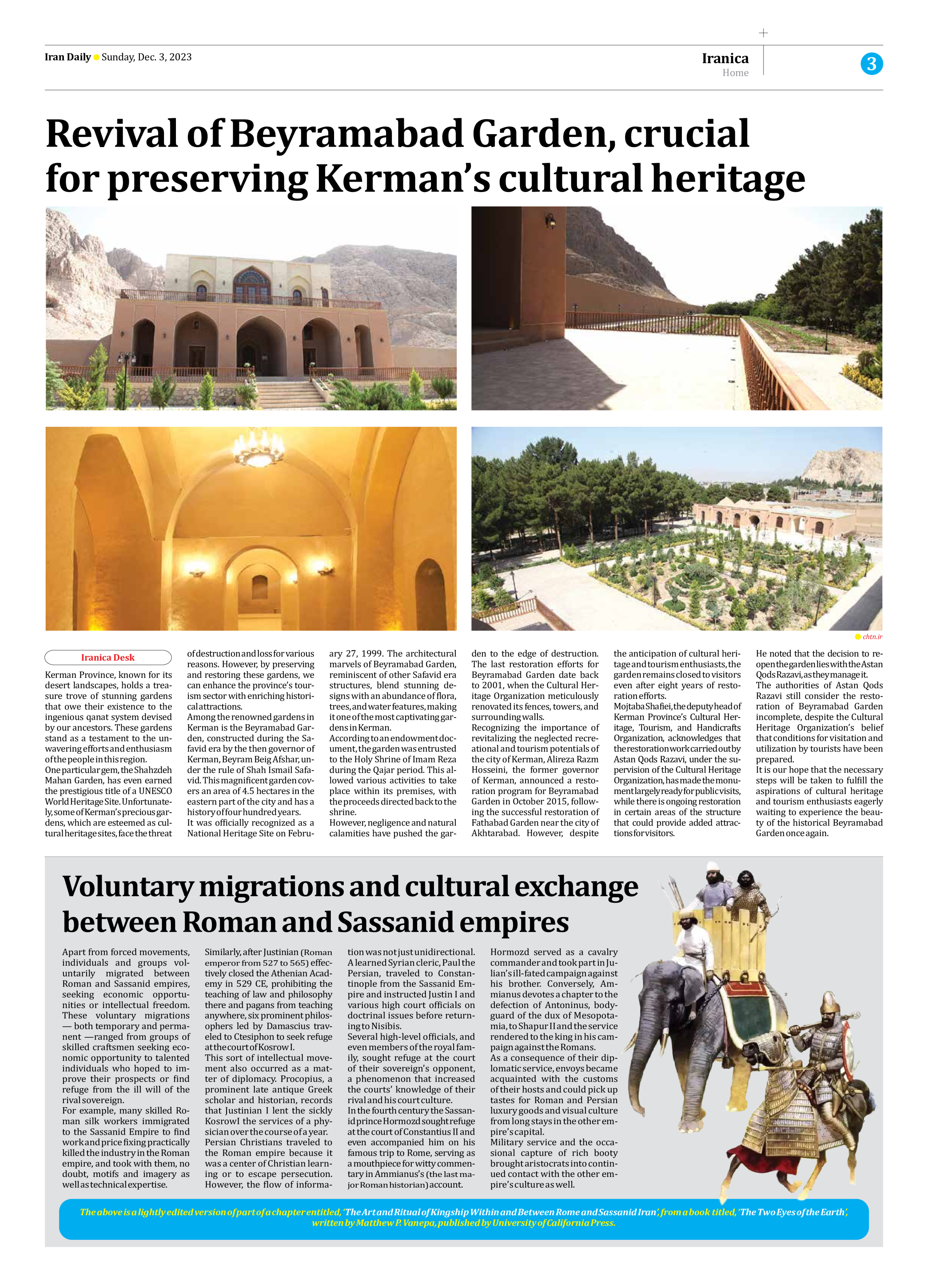
Voluntary migrations and cultural exchange between Roman and Sassanid empires
Apart from forced movements, individuals and groups voluntarily migrated between Roman and Sassanid empires, seeking economic opportunities or intellectual freedom. These voluntary migrations — both temporary and permanent —ranged from groups of skilled craftsmen seeking economic opportunity to talented individuals who hoped to improve their prospects or find refuge from the ill will of the rival sovereign.
For example, many skilled Roman silk workers immigrated to the Sassanid Empire to find work and price fixing practically killed the industry in the Roman empire, and took with them, no doubt, motifs and imagery as well as technical expertise.
Similarly, after Justinian (Roman emperor from 527 to 565) effectively closed the Athenian Academy in 529 CE, prohibiting the teaching of law and philosophy there and pagans from teaching anywhere, six prominent philosophers led by Damascius traveled to Ctesiphon to seek refuge at the court of Kosrow I.
This sort of intellectual movement also occurred as a matter of diplomacy. Procopius, a prominent late antique Greek scholar and historian, records that Justinian I lent the sickly KosrowI the services of a physician over the course of a year.
Persian Christians traveled to the Roman empire because it was a center of Christian learning or to escape persecution. However, the flow of information was not just unidirectional. A learned Syrian cleric, Paul the Persian, traveled to Constantinople from the Sassanid Empire and instructed Justin I and various high court officials on doctrinal issues before returning to Nisibis.
Several high-level officials, and even members of the royal family, sought refuge at the court of their sovereign’s opponent, a phenomenon that increased the courts’ knowledge of their rival and his court culture.
In the fourth century the Sassanid prince Hormozd sought refuge at the court of Constantius II and even accompanied him on his famous trip to Rome, serving as a mouthpiece for witty commentary in Ammianus’s (the last major Roman historian) account.
Hormozd served as a cavalry commander and took part in Julian’s ill-fated campaign against his brother. Conversely, Ammianus devotes a chapter to the defection of Antoninus, bodyguard of the dux of Mesopotamia, to Shapur II and the service rendered to the king in his campaign against the Romans.
As a consequence of their diplomatic service, envoys became acquainted with the customs of their hosts and could pick up tastes for Roman and Persian luxury goods and visual culture from long stays in the other empire’s capital.
Military service and the occasional capture of rich booty brought aristocrats into continued contact with the other empire’s culture as well.
The above is a lightly edited version of part of a chapter entitled, ‘The Art and Ritual of Kingship Within and Between Rome and Sassanid Iran’, from a book titled, ‘The Two Eyes of the Earth’,
written by Matthew P. Vanepa, published by University of California Press.







